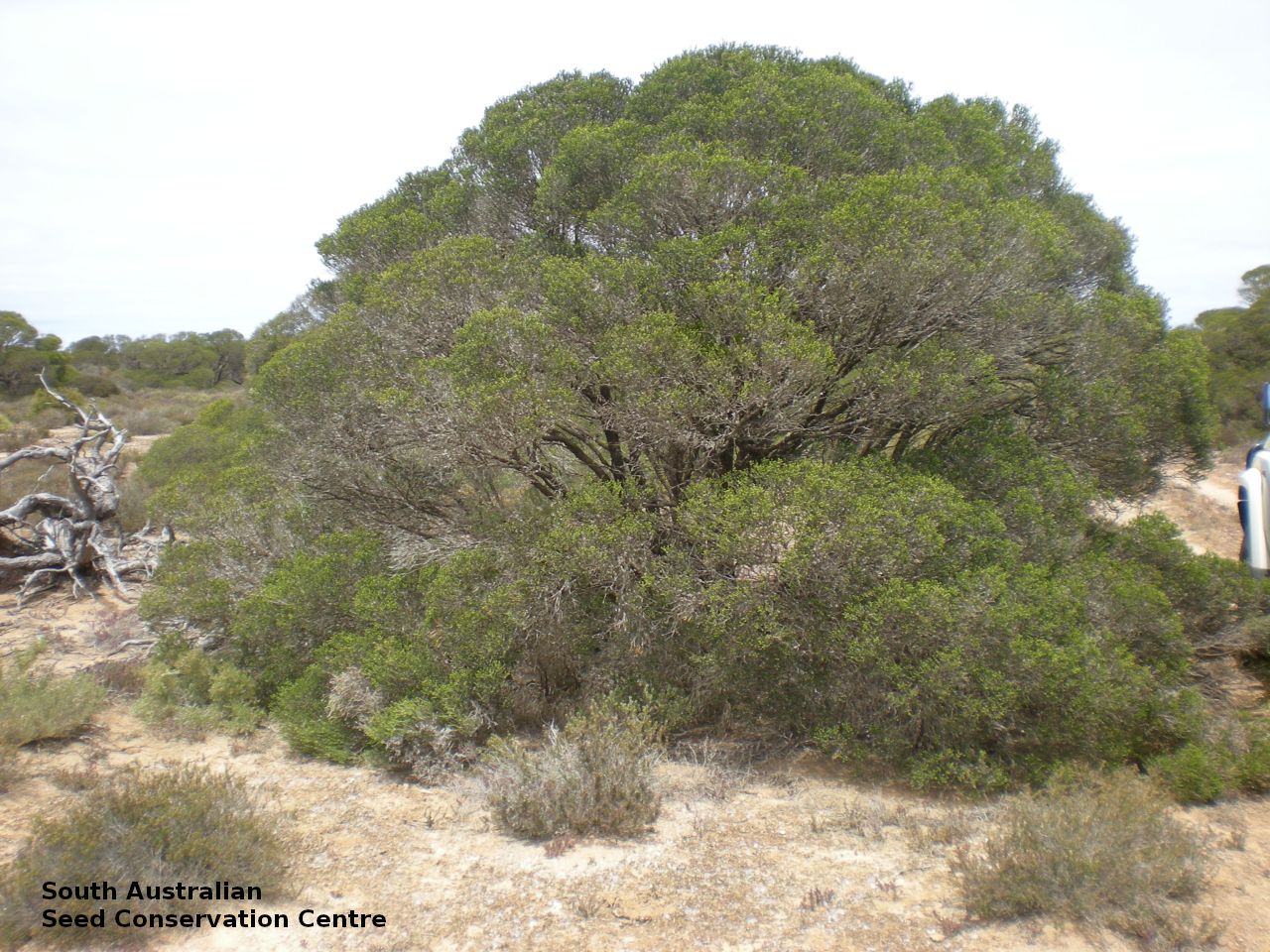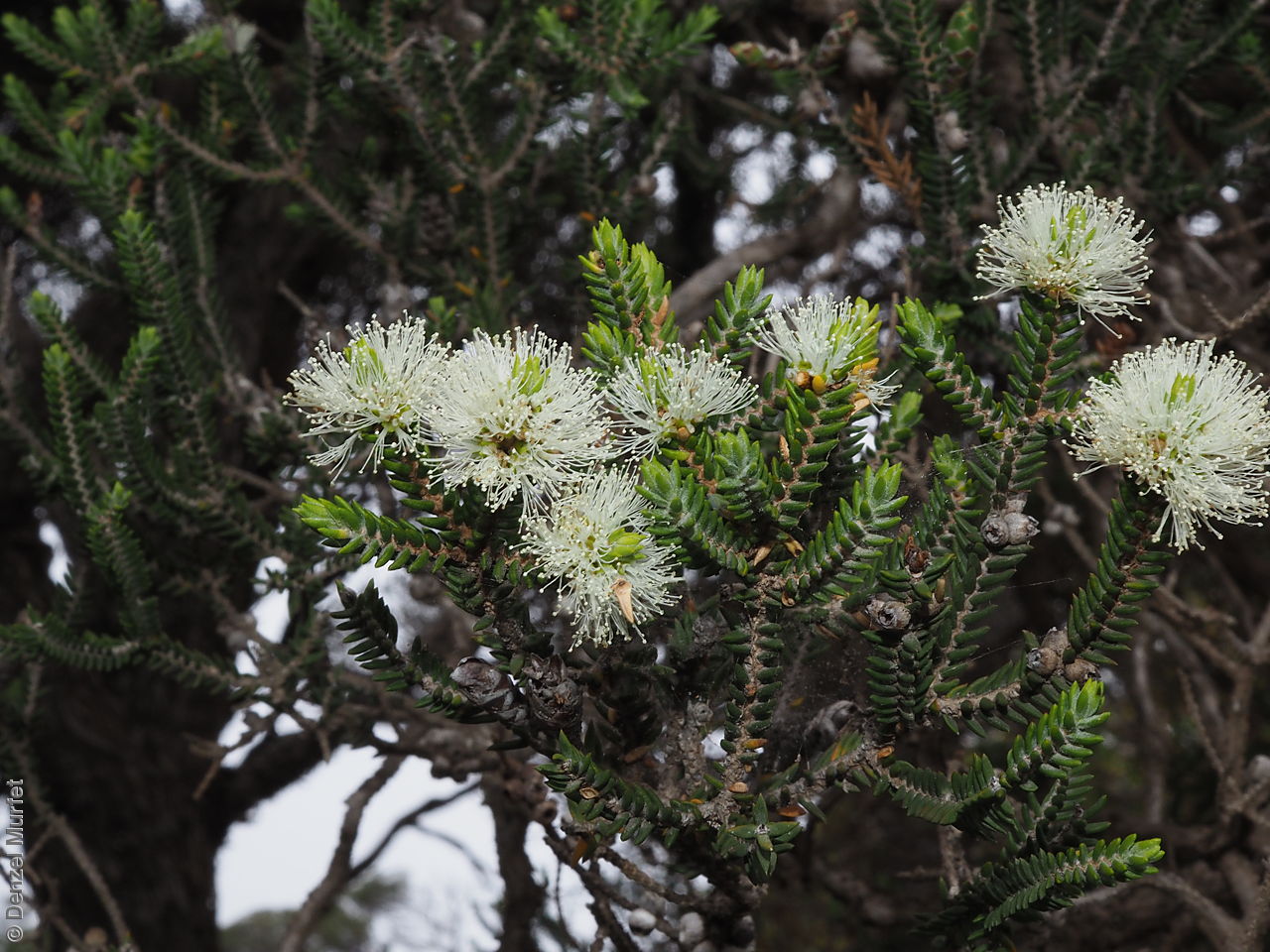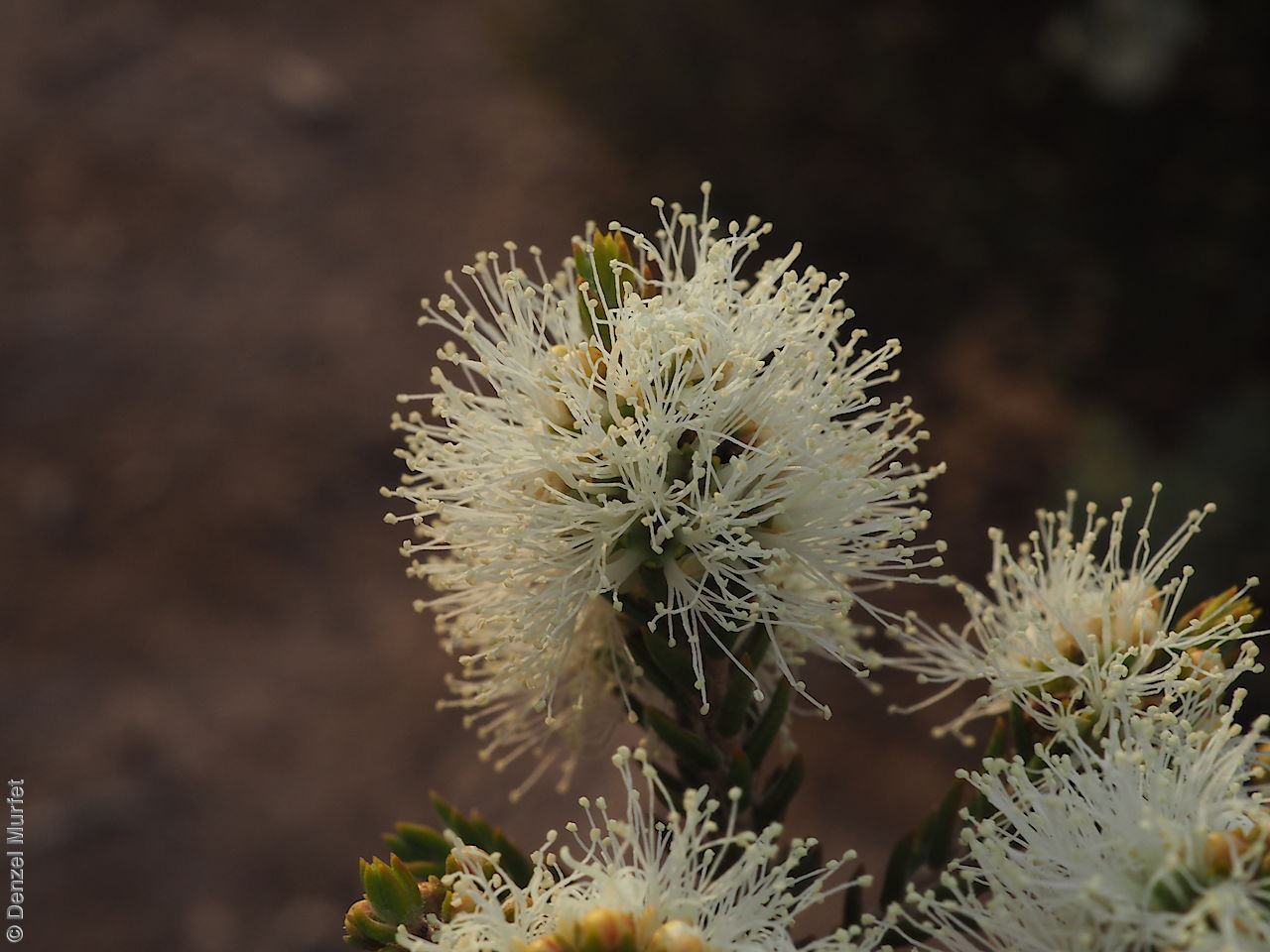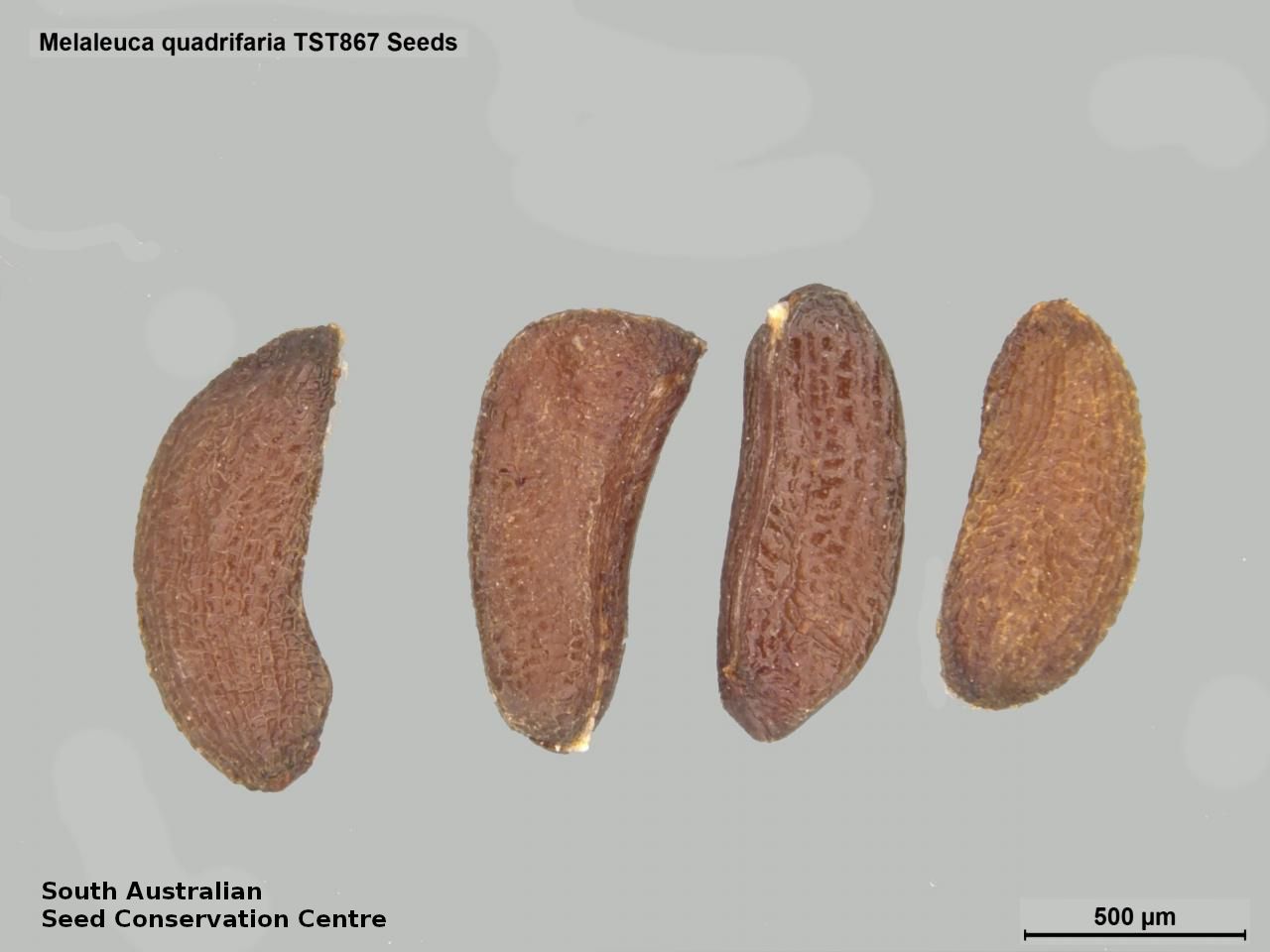















Botanical art
Common names
Limestone Honey-myrtle
Etymology
Melaleuca, from the Greek 'melas', meaning black and 'leucon', meaning white, alluding to the contrasting colours of the bark of the first species described, which is said to have had white branches against a black trunk. Quadrifaria from the Latin 'quadri,' meaning four and 'fidus,' meaning split,referring to the leaves in four rows.
Distribution and status
Found only in a small area around Border Village in South Australia close to the Western Australian border, growing on clay loam or sandy clay over limestone. Also found in Western Australia. Native. Rare in South Australia. Common in Western Australia.
Herbarium region: Nullarbor
AVH map: SA distribution map (external link)
Plant description
Large rounded perennial shrub to 6 m tall and 4 m wide with small lance-shaped leaves in four rows along the stems. Flowers are white or cream, in clusters along the stems, appearing in summer. Fruits are round woody capsules remaining on the plant. Seeds are tiny brown oblong seeds to 1.2 mm long and 0.5 mm wide. Seed embryo type is folded.
Seed collection and propagation
Collect seeds between January and December. Collect capsules that are large and hard, with closed valves. Place the capsules in a tray and leave to dry for at least two weeks or until all the valves are open. Then place all the capsules into a bucket with a lid if possible and shake hard to dislodge the seeds from the capsules. Use a sieve to separate the seeds from the capsules. The fine material will contain the seeds and other flowering material. It is very difficult to separate the seeds from this other material as the size, shape and weight are very similar, however the seeds will be a darker brown. Store the seeds with a desiccant such as dried silica beads or dry rice, in an air tight container in a cool and dry rplace. From one collection, the seed viability was high, at 85%. Seeds are non-dormant, viable seed should germinate readily.
| Location | No. of seeds (weight grams) | Number of plants | Date collected | Collection number Collection location | Date stored | % Viability | Storage temperature |
|---|---|---|---|---|---|---|---|
| BGA | 8,400 (21.82 g) | 15 | 4-Nov-2009 | TST867 Nullarbor | 1-Jun-2010 | 85% | -18°C |
Number of plants: This is the number of plants from which the seeds were collected.
Collection location: The Herbarium of South Australia's region name.
% Viability: Percentage of filled healthy seeds determined by a cut test or x-ray.